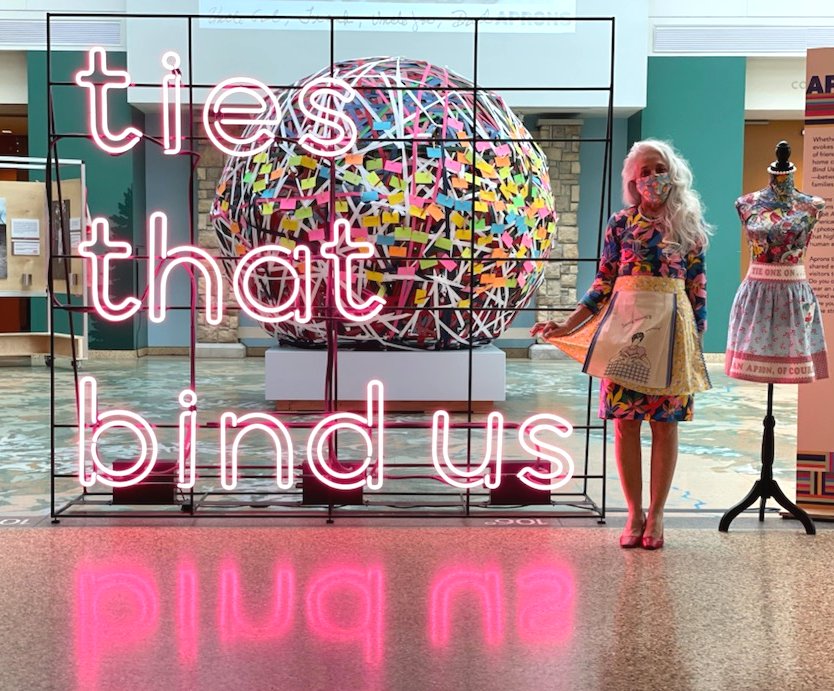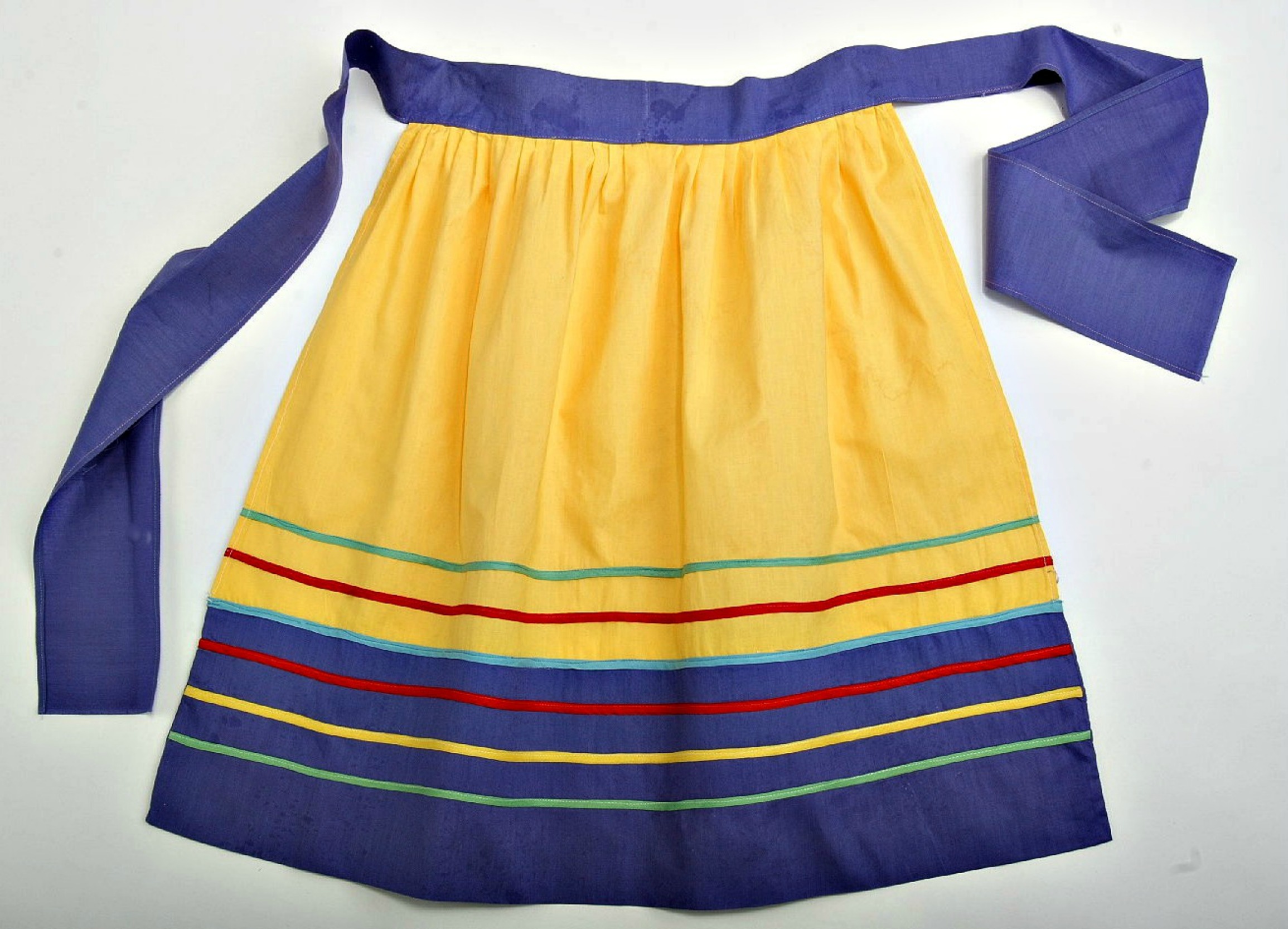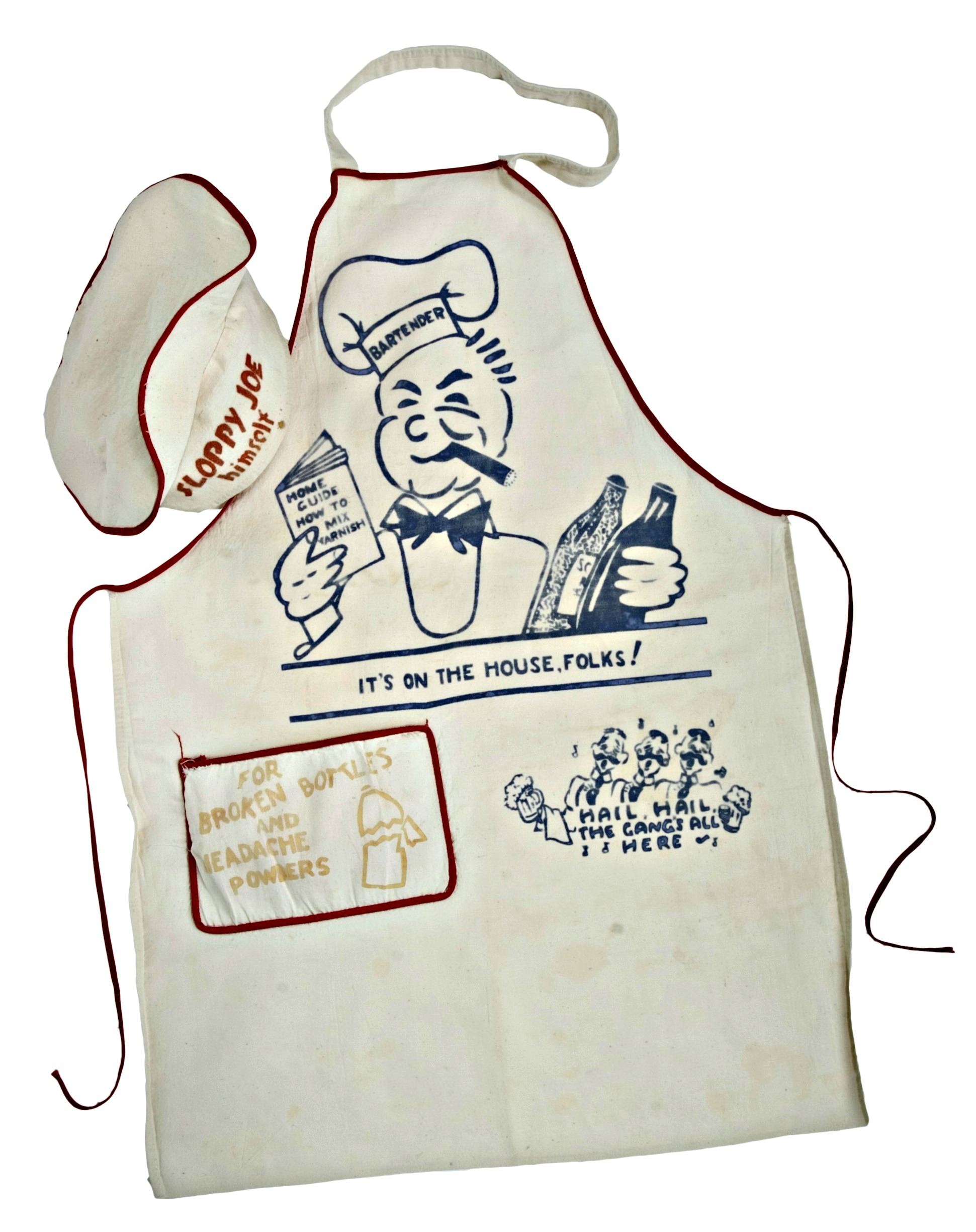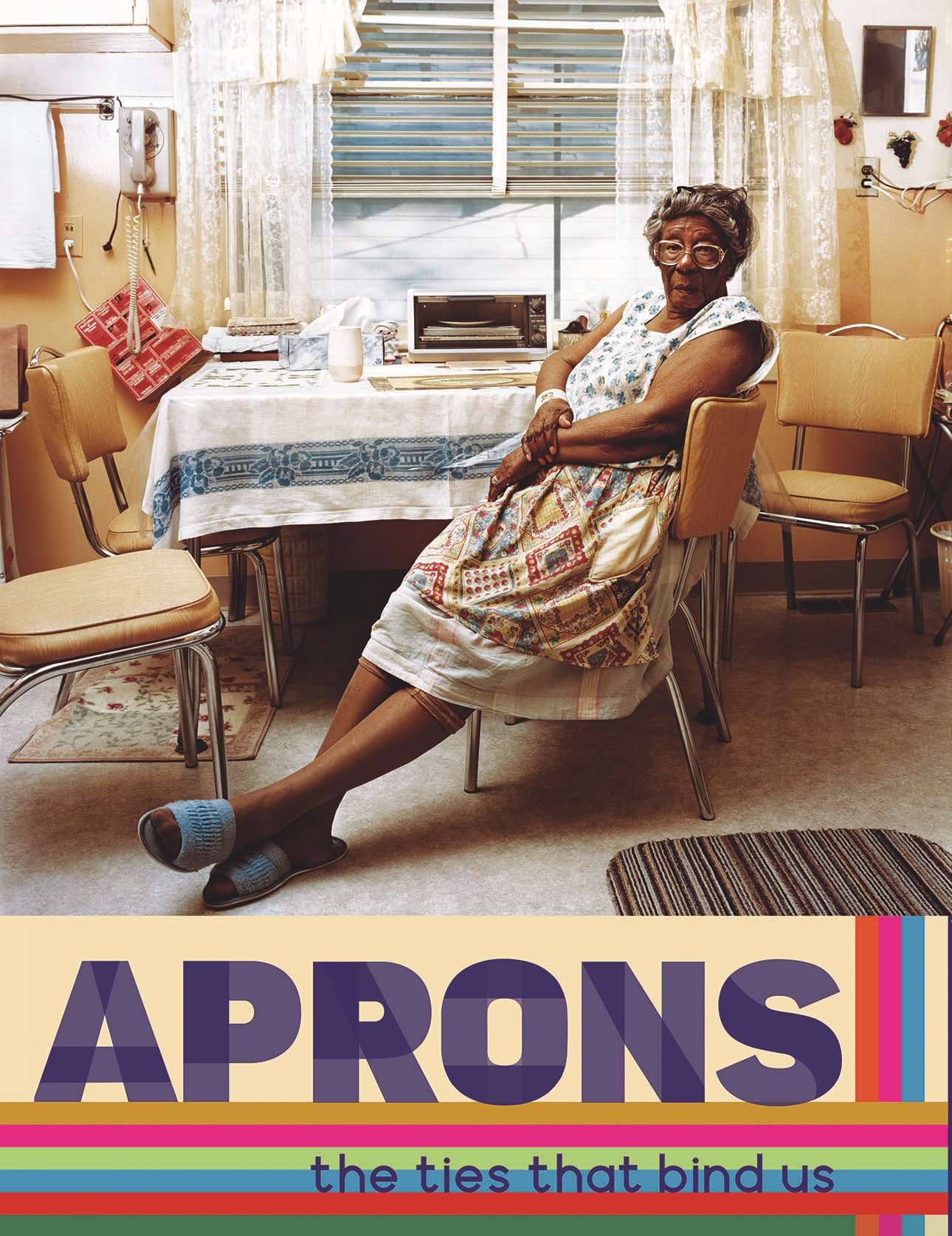
Story
Apron Chronicles
Embracing the Ties that Bind Us
Apron Chronicles: a Patchwork of American Recollections, now on display at the History Colorado Center in Denver, has been a labor of love for EllynAnne Geisel. As the exhibition reaches the end of its remarkable run in May, she recounts the journey that led her to recognize the ties that bind us.
Do you remember where you were when you heard that Harriet Nelson died? I do, and in exquisite detail, because Harriet Nelson was my idol growing up. Watching “The Adventures of Ozzie and Harriet” every week on television, I reverently noted Harriet’s clever way with her husband and sons, how she dressed up each day to stay at home taking care of her family. I loved how they worshipped her, and I coveted her apron.
My own mother was an enigma to a classically 1950s neighborhood. Long before it was the norm, she had a college degree, worked full time and raised a family of six children. She enjoyed her career and was successful at it, but as far as I was concerned, the job I wanted was Harriet’s.

Author and self-described "apron archaeologist" EllynAnne Geisel at the History Colorado Center, 2021
In 1966, I entered the “University of Southern Hospitality” with the goal of acquiring my “Mrs.” degree. A tad sidetracked by boys in bell-bottoms and rock-and-roll, I nonetheless remained vigilant to my girlhood goal of marrying my Ozzie and becoming a full-time homemaker and mother. Exchanging vows in 1975 and soon after twice a mommy, I was blissfully living my girlhood dream. And for twenty-four years, I happily performed the domestic routines of housewifery and childrearing.
In 1999, the departure of our youngest for sleep-away college signaled my career choice as a homemaker was at its end. With his leave-taking, I dared imagine a second career goal for my empty-nest self: that of a freelance writer. I decided the first article should be about the symbol of domesticity—the humble apron.
But there was a problem with the subject choice: I didn’t own an apron.

Discovered at a thrift store, EllynAnne's first apron speaks to the common threads shared by those who wear the unassuming garment.
Visiting several thrift stores before finding an apron in more than rag taggle condition, I spied a skirt of sunny yellow cotton with a wide waistband the color of periwinkles, and four evenly spaced narrow bands of colored bias tape. At a cost of twenty-five cents, this was the apron that set me on an apron journey and changed my life.
Following a laundering, it was while pressing the apron I experienced a surge of emotion of such visceral intensity, I initially thought I’d been electrocuted by the iron! Tying on the apron intensified a sense of spiritual connection to the woman who had selected the cloth, sewed the pattern, and worn the apron as a part of her daily wear. I was replicating her actions, and in doing so, felt she was trying to get through to me, to hear her voice.
To find out if others thought about the apron as a conduit of connectivity to women of earlier generations, I queried fifty friends and family via postcards. My request prompted a shockingly scant response, and several of an unanticipated personal critique that amounted to You have too much time on your hands and You need help. Why, I thought, was I so affected by an apron, yet the telling of it had translated so poorly? Considering the answer perhaps lay in my seeing the apron and touching the fabric, I revamped my approach.

The "Backyard Daddy Ensemble," part of EllynAnne's incredible apron collection.
I returned to the thrift stores, purchasing an old woven laundry basket and enough aprons to fill it to overflowing. And for the next four years, I embarked on an apron journey around America, toting that laundry basket everywhere—the bank, grocery, library, hardware store, movie theatre, ballpark, concert, ladies’ restroom line, and homes to which we were invited. The colorfully arrayed basket proved an absolute magnet to women and men similarly, calling forth reminiscences rooted in the gamut of human experience.
In the twenty years since I began this apron journey, I have been privy to hundreds of stories, and I have learned that an apron memory isn’t a scholarly dissertation. It isn’t mired in dusty facts and details. It is a story of life and memory that engages and catches you up in the telling. You need not have walked in the storyteller’s shoes to know the journey.
Apron Chronicles: A Patchwork of American Recollections debuted in 2004, three years after the 9/11 terrorist attacks. Such was a time when our sense of security was trampled, our trust in one another rife with mistrust. The exhibit then and now offers a respite from a climate of societal outrage and chaos through an unexpected domestic symbol: the apron. The memories that have been shared are much more about life than fabric, illustrating how much we are more alike than different.
The Chronicles tap into our collective memories and experiences via universal themes, such as gratitude, wellness, survival, fortitude, opportunity, tradition, and faith. These themes are also in harmony with History Colorado's mission of promoting inclusiveness through storytelling, generational gathering, and the showcasing of our commonalities. And that is why the exhibition’s sixteen year tour will proudly end there.
Looking back at all my projects begun and abandoned, I’ve contemplated why I have never tired of my love of aprons. The answer is that I could spend a lifetime traveling the United States with a laundry basket full of aprons, endlessly meeting the dearest people with the most interesting stories, and all through the conduit of a domestic icon. That such a prosaic object can trip such distant memories and emotions, and in turn, tie us together through our journey as human beings, is simply amazing.
More from The Colorado Magazine
Pie It Is! Diet experts and Marxists warn against imbuing things and food with abstract emotions and values. Yet, the alchemy of pie makes it hard to deny that these homespun pastries embody love, family, and human connection.
All Abuzz About Beneficial Bugs Celebrating Seventy-Five Years of the Palisade Insectary
Creede and World War I—A Knitter’s Tale It was the summer of 2000 and eleven-year-old Lizzie, a beginning knitter, hoped she’d found a mentor—her ninety-four-year-old grandmother, Mary Elting Folsom. Lizzie’s question took Mary back to 1917, several months after the US entered World War I.

